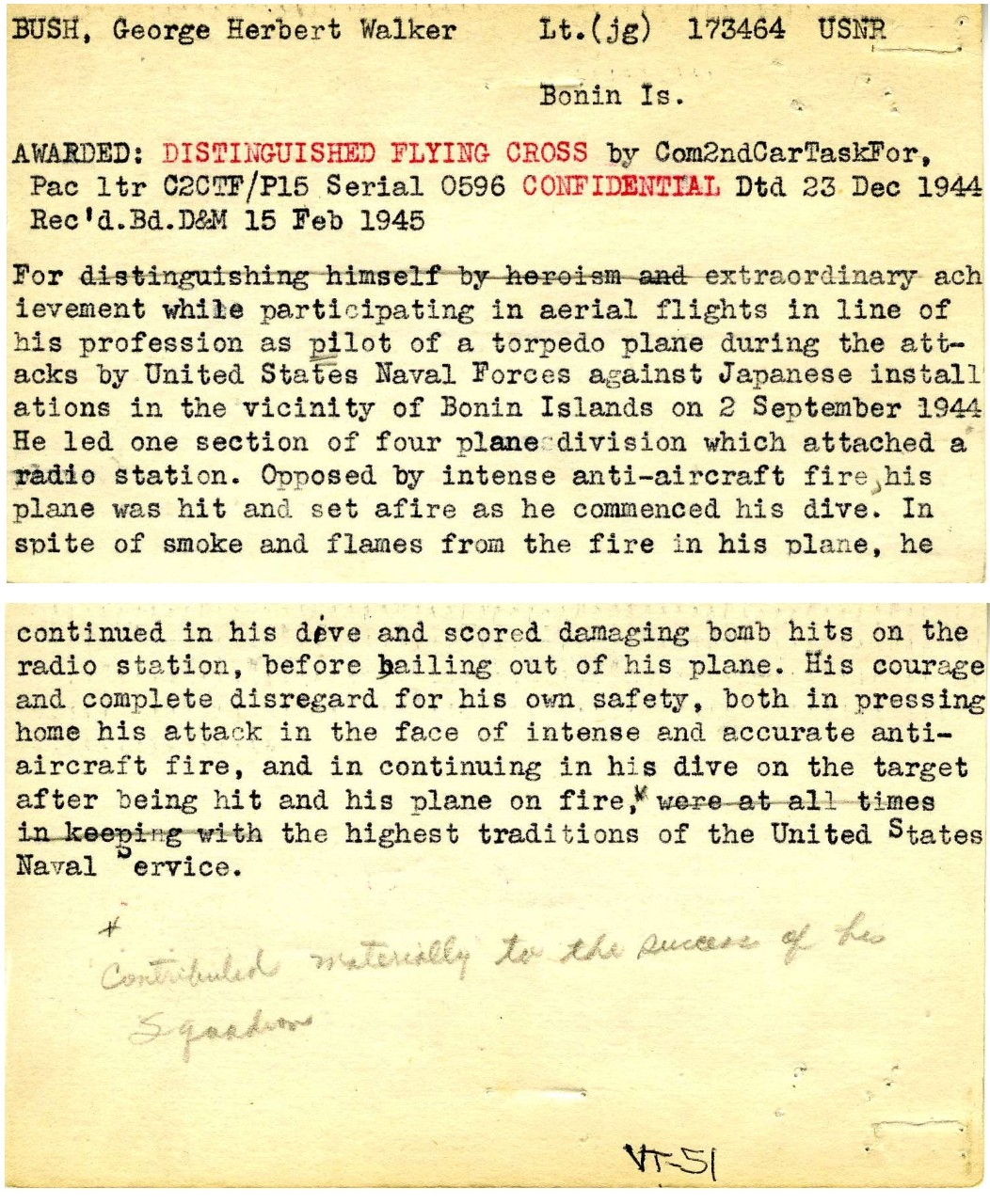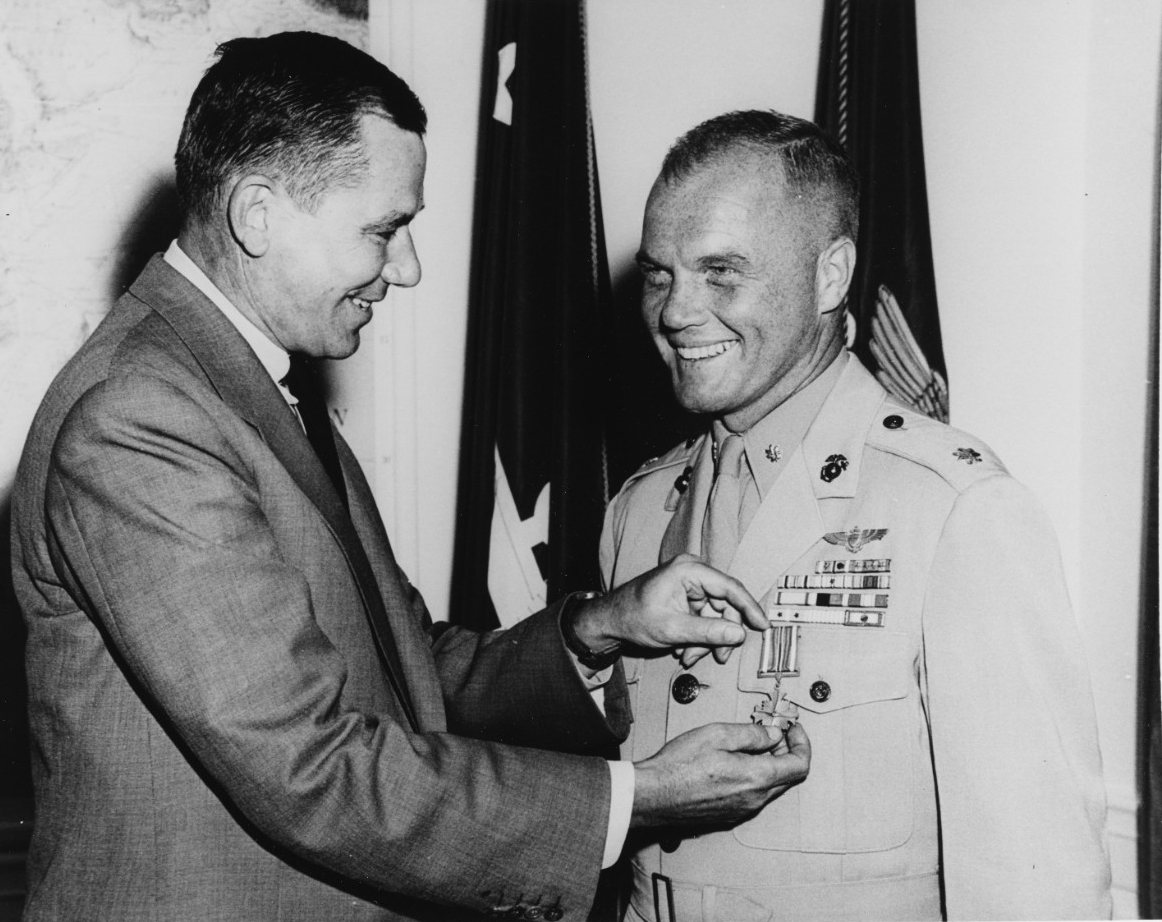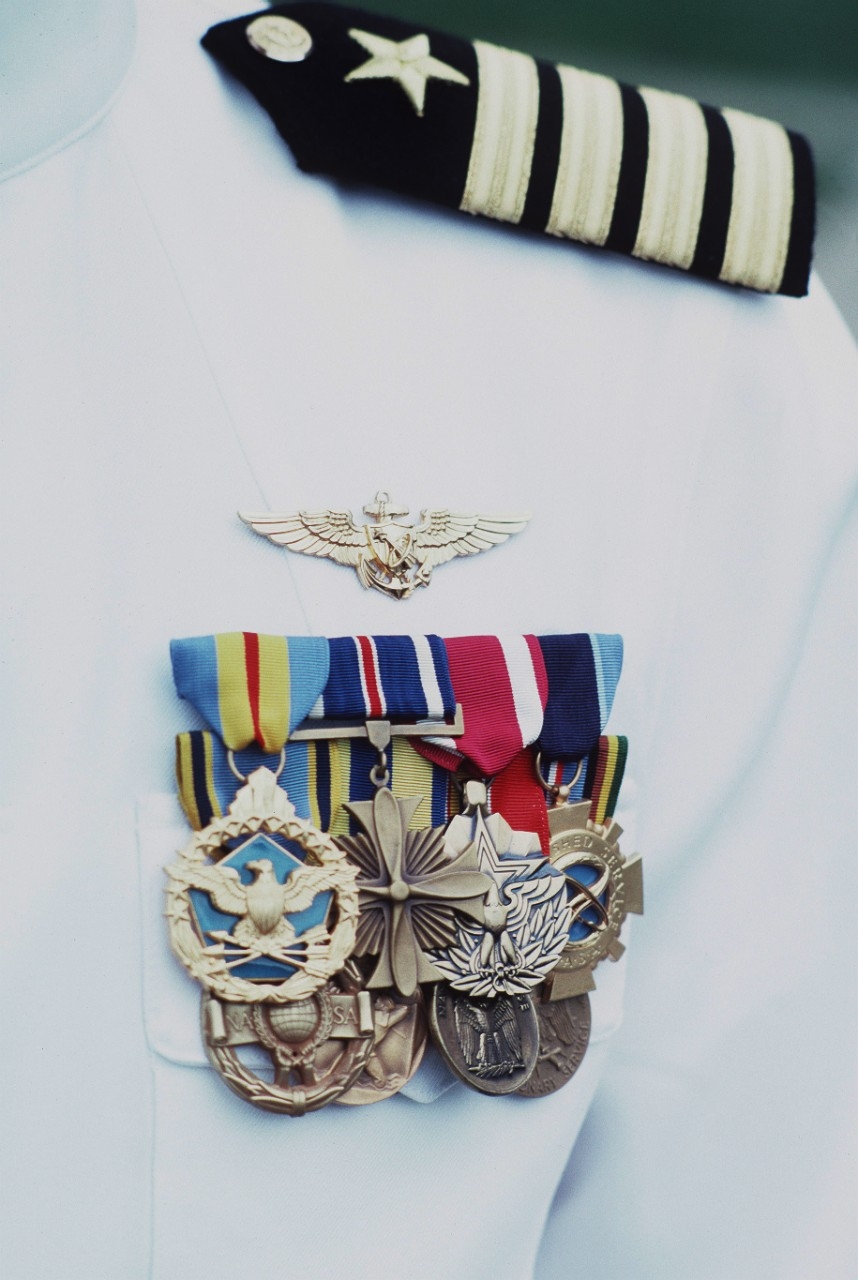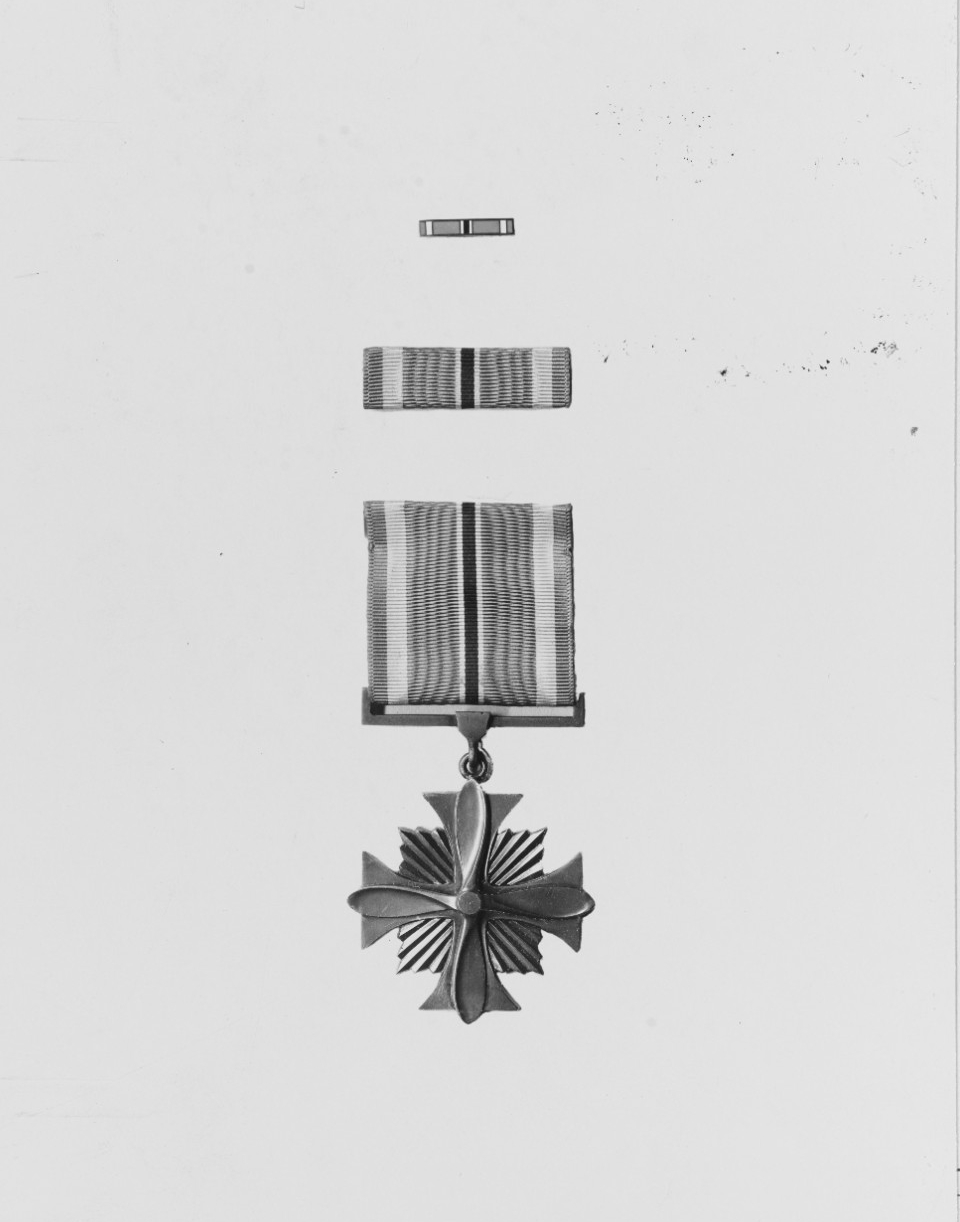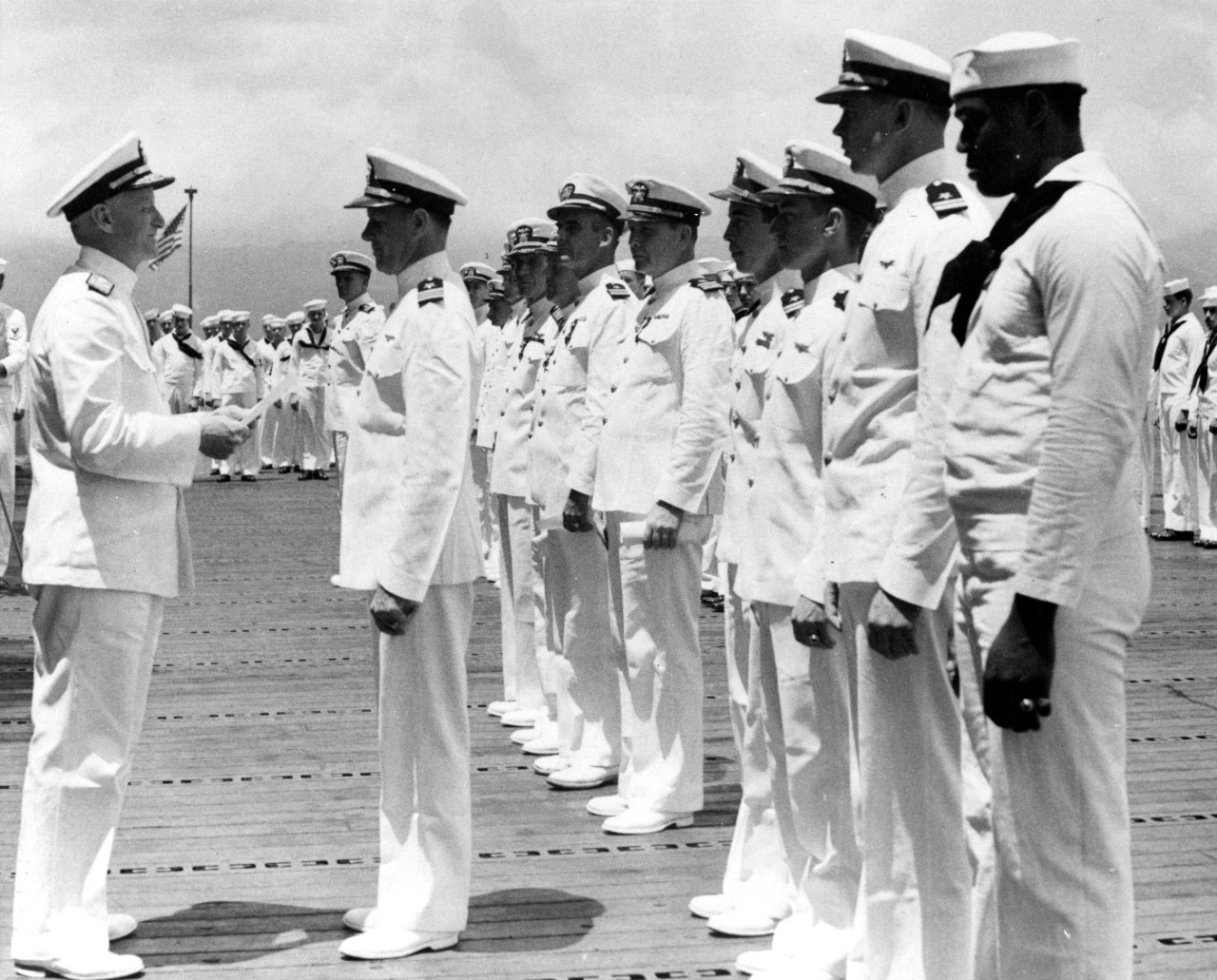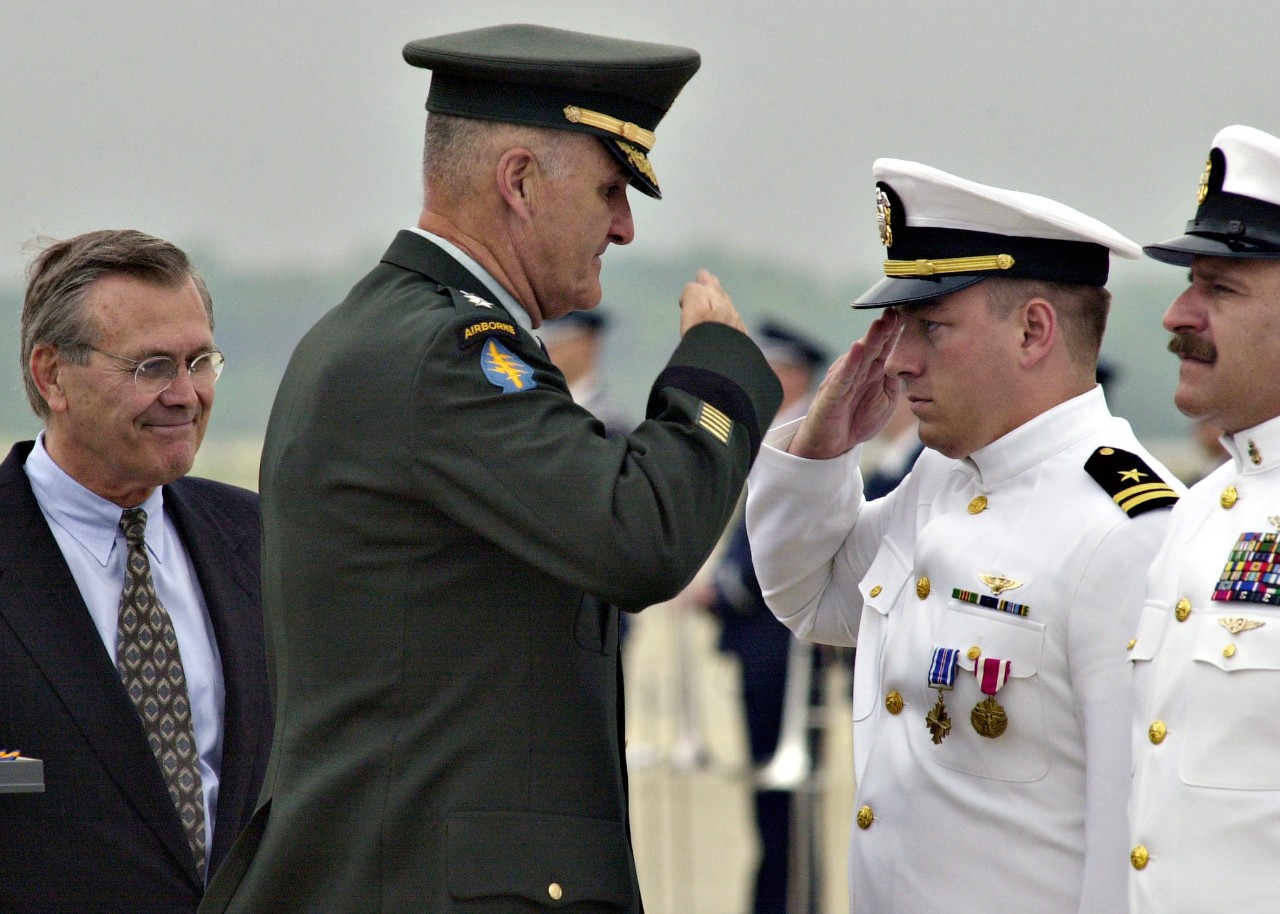Distinguished Flying Cross
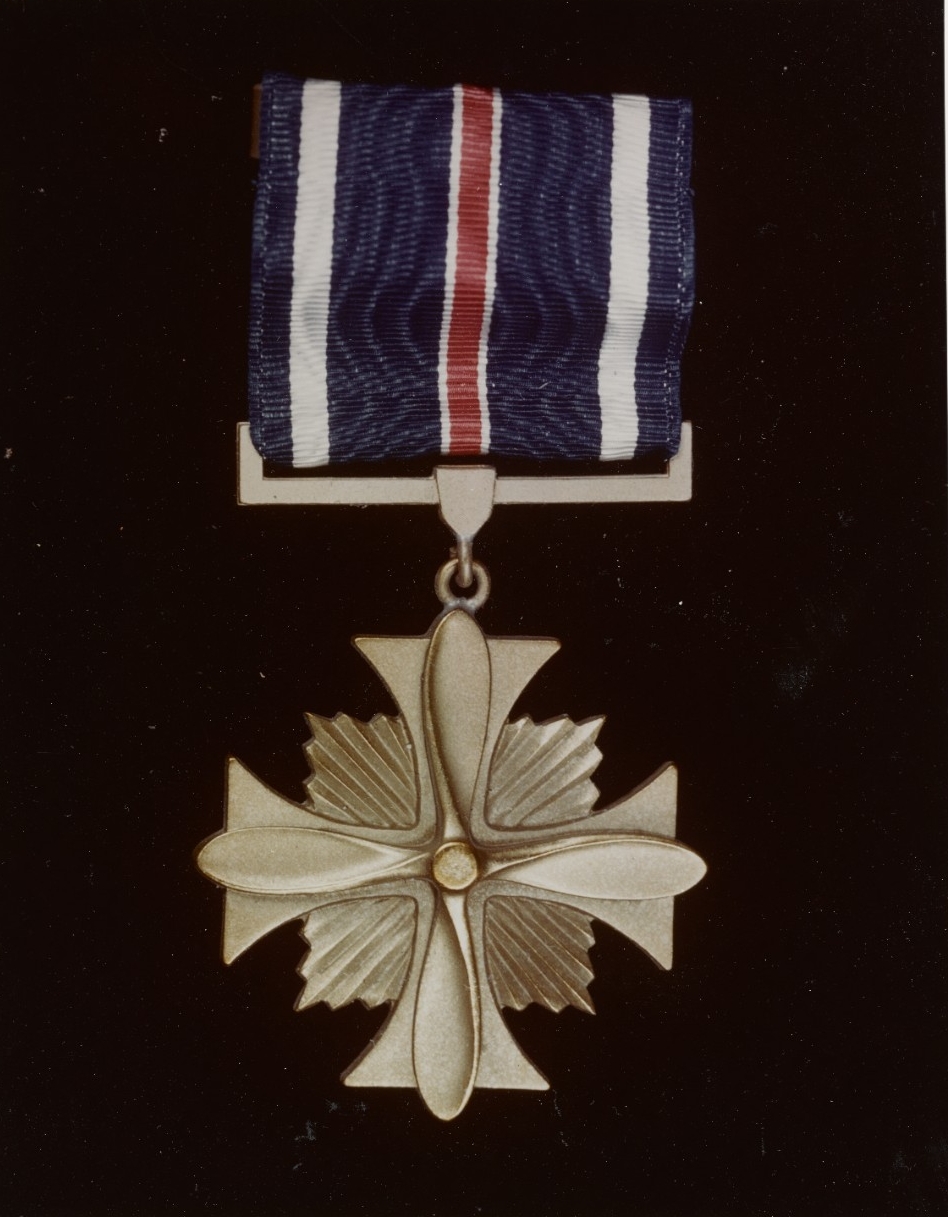
The Distinguished Flying Cross was established by Congress on 2 July 1926 and may be awarded to any Navy, Marine Corps, or Coast Guard personnel, while serving in the capacity of the Armed Forces, who distinguish themselves for heroism or outstanding achievement while participating in aerial flight. Designers: Elizabeth Will and Arthur E. DuBois. Photographed during World War II. National Archives photograph. Catalog#: 80-G-K-13532.
The Distinguished Flying Cross traces its roots to World War I when military aviation was first used in combat. Aviation added a completely new dimension to war and with it, a new arena for feats of valor and heroism. On 2 July 1926, the Distinguished Flying Cross was established by an act of Congress and signed into law by President Calvin Coolidge on 28 January 1927. Congress would later amend the act on 30 July 1937 to give the U.S. Coast Guard the authority to award the Distinguished Flying Cross. President Franklin D. Roosevelt implemented the amendment on 8 January 1938.
U.S. Army Corps reservist Captain Charles A. Lindbergh was the first to receive the Distinguished Flying Cross on 11 June 1927 for his May 1927 solo flight across the Atlantic in the Spirit of St. Louis. Wilbur and Orville Wright later received the decoration for an earlier event—the first manned powered flight at Kitty Hawk, North Carolina—on 18 December 1928. Orville’s was awarded posthumously, as he died in 1912.
The Distinguished Flying Cross may be awarded to any servicemember, while serving in the capacity of the Armed Forces, who distinguish themselves for heroism or outstanding achievement while participating in aerial flight. For heroism, the act must involve action in the face of danger and well above the actions of others under similar circumstances. For extraordinary achievement, the act must be so exceptional that it clearly sets apart the individual from his or her colleagues.
The Army’s Institute of Heraldry’s Arthur E. DuBois and Elizabeth Will designed the Distinguished Flying Cross medal. It has a four-bladed propeller in the reentrant angles of the cross, with rays between the arms of the cross. The reverse side of the medal is blank, leaving space for the recipient's rank and name. The ribbon is primarily blue, with a narrow band of red, bordered by white stripes. The edges of the ribbon are outlined in white and blue bands. For subsequent medals, stars are authorized for wear for the naval services. In order of precedence, the Distinguished Flying Cross is after the Legion of Merit and before the Navy/Marine Corps Medal.
*****
Reference
Borch, Fred L. and McDowell, Charles P. Sea Service Medals: Military Awards and Decoration of the Navy, Marine Corps, and Coast Guard. Annapolis: Naval Institute Press, 2009.
Further Readings
- H-Gram 006-6 SBD-2 Dauntless, BuNo 2107, Battle of Midway Veteran
- H-Gram 022-3: Arctic Strike—Operation Leader, the U.S. Carrier Raid on Norway, and “Diz” Laird
- H-Gram004-5: Toughness—Aviation Machinist Mate 1st Class Bruno Peter Gaido
- Distinguished Flying Cross Recognizes Heroism and Extraordinary Achievement
- Lieutenant George H.W. Bush’s Distinguished Flying Cross Citation
Additional Resources
Selected Navy Distinguished Flying Cross Recipients
- Lieutenant Robert H. Anderson
- Captain Norman R. Berree
- Lieutenant Richard H. Best
- Ensign Jesse L. Brown
- Lieutenant George H.W. Bush
- Vice Admiral Turner F. Caldwell Jr.
- Captain James B. Cain
- Captain Eugene A. Cernan
- Aviation Machinist’s Mate 1st Class Bruno Gaido
- Admiral James L. Holloway III
- Captain James A. Lovell Jr.
- Rear Admiral Clarence W. McClusky Jr.
- Rear Admiral William A. Moffett Jr.
- Captain Walter M. Schirra Jr.
- Commander James B. Stockdale
- Rear Admiral Ernest E. Tissot
- Captain Harmon T. Utter
- Commander Eugene A. Valencia
- Commander Warren C. Vincent
- Captain Harold E. Vita
- Lieutenant Commander George S. Von Weller
- Rear Admiral Albert Ogden Vorse Jr.
- Captain James E. Vose Jr.
- Commander Alexander Vraciu
Selected Imagery
A view of Captain Richard H. Truly's decorations. They include the Naval Astronaut Wings, the Navy Distinguished Flying Cross, the Department of Defense Distinguished Service Medal, and the NASA Distinguished Service Medal. Truly was the commanding officer of the U.S. Naval Space Command, 1 October 1983. National Archives Identifier: 6383280.
Lieutenant Commander Clarence W. McClusky Jr., Air Group Commander, USS Enterprise (CV-6) received the Distinguished Flying Cross from Admiral Chester W. Nimitz at an awards ceremony held on Enterprise's flight deck at Pearl Harbor, 27 May 1942. Official U.S. Navy photograph now in the collections of the National Archives. Catalog#: 80-G-23590.
Secretary of Defense Donald H. Rumsfeld looked on as U.S. Army General Hugh Shelton, Chairman of the Joint Chiefs of Staff, salutes U.S. Navy Lieutenant Shane Osborn after awarding him the Distinguished Flying Cross and the Meritorious Service Medal at an awards ceremony on Andrews Air Force Base, Maryland, 18 May 2001. DoD photo by Petty Officer 2nd Class Bob Houlihan. National Archives Identifier: 6702326.

